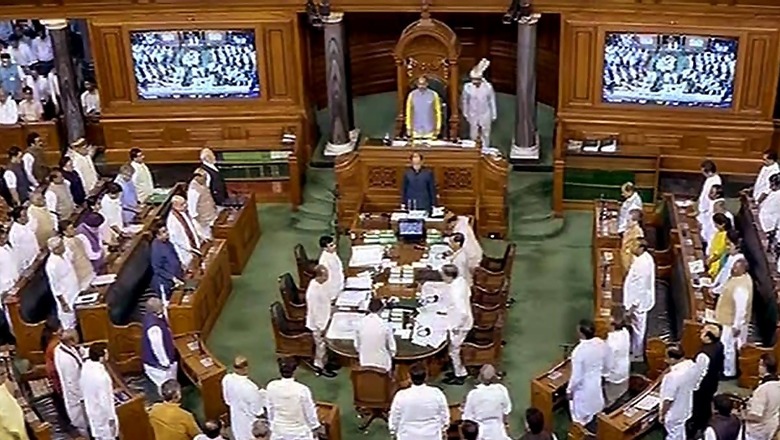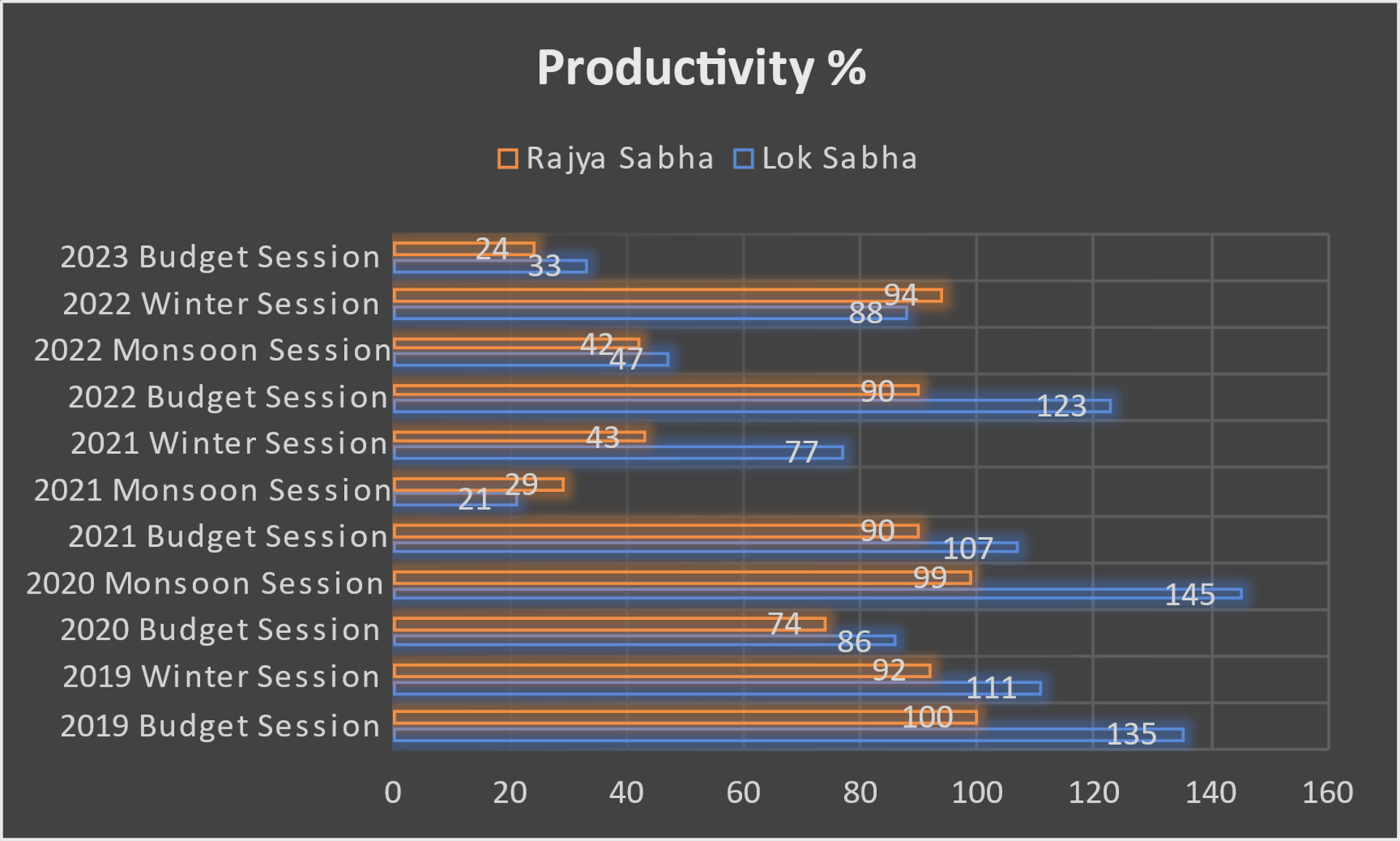
views
Parliament has become one of the most active protest sites, consuming a major part of its scheduled working hours. It sits for 60 to 70 days a year, divided into three sessions – budget, monsoon and winter – while both the houses work from 11 am to 6 pm with an hour’s recess.
This year’s monsoon session began on Thursday and, much like in the recent past, was finally adjourned for the day amid repeated protests. Opposition parties protested over the unrest in Manipur – demanding discussions in the lower and upper houses – and the prime minister’s statement on it. So, it’s not surprising that the session for both houses, once again, began on a stormy note.
Parliament performance in 2023, so far
According to data from PRS Legislative Research, the productivity rate of the budget session, which usually performs well, hit rock bottom. Lok Sabha could work only for 33 percent of its scheduled working hours while it was 24 percent for the Rajya Sabha. Before this, the budget session had recorded such a poor performance in 2018 – 21 percent for Lok Sabha and 27 percent for Rajya Sabha.
Both the houses of Parliament had 25 sitting days. The lower house could work for 46 hours, losing 96 hours due to interruptions and adjournments. The upper house had a worse record – 32 hours and 14 minutes with 109 hours lost to disruptions.
There was much brouhaha over Congress leader Rahul Gandhi’s comments in London that he made against the BJP-led central government. Some opposition parties, including the Congress, protested over the Hindenburg report against the Adani Group and even demanded a probe by a joint parliamentary committee (JPC).

17th Lok Sabha: Productivity rates from 2019 to 2022
Data shows that the first session of the 17th Lok Sabha began on June 17, 2019, with an oath and affirmation by new members as well as the selection of the speaker of the house. The first session of Rajya Sabha, during the 17th Lok Sabha or its 249th session, began three days later on June 20. Lok Sabha had 37 sittings while the Rajya Sabha had 35.
The session saw over 100 percent productivity. Data shows the lower house worked 135 percent over its scheduled working hours. The upper house, too, used all its working hours giving a 100 percent productivity rate.
The LS was expected to sit for 280 hours and added another 73.14 hours with late hour sittings. The RS, meanwhile, was expected to sit for 195 hours and 35 minutes but lost 19 hours and 12 minutes due to interruptions and adjournment; it made up for this by adding late hour sittings.
Productivity of the 2019 winter session was excellent as well. It was 111 percent for Lok Sabha and 92 percent for Rajya Sabha but productivity rate was low for sessions during 2020 and 2021 – the pandemic years – due to the Covid crisis. The performance was adversely impacted due to reduced number of days, large number of absentees, lack of debate while passing legislations and cancellation of a session.
The 2020 budget session was supposed to have 31 sittings but sat for only 23 days. Parliament was adjourned sine die on March 23, 2020, and, hence, Lok Sabha’s productivity level stood at 86 percent while it was 74 percent for Rajya Sabha.
The monsoon session was delayed and began on September 14, 2020. It was supposed to end on October 1, 2020, but was concluded earlier on September 23, 2020. The 10-day session registered productivity at 145 percent in the lower house and 99 percent in the upper house. The winter session was cancelled.
All three sessions were held in 2021. Productivity of LS and RS during the budget session was at 107 percent and 90 percent, respectively. The session usually begins with the presentation of the union budget and related financial bills and is expected to be the most productive of all three sessions.
But productivity drastically came down in the monsoon session, which began on July 19, 2021, and was concluded two days ahead of its last working day. Protests by opposition parties demanding discussions on farm laws and farmers’ protests, price rise and Pegasus scandal brought productivity down to 21 percent in Lok Sabha and 29 percent in Rajya Sabha.
In the 2021 winter session, 12 MPs were suspended for their unruly behaviour during the monsoon session. It fuelled the opposition parties’ protests but this session performed better on the productivity scale. The lower house worked for 77 percent of its allotted time while it was 43 percent for the upper house.
The year 2022 followed the 2021 trend. Productivity of the LS during the budget session was 123 percent while it was 90 percent for the RS. It came down to 47 percent for the former and 42 percent for the latter during the monsoon session.
Lok Sabha lost 54 working hours while Rajya Sabha lost 76 due to interruptions and adjournments. The session was supposed to end on August 12, 2022, but disruptions forced it to be concluded on August 8, 2022.
Rival parties protested on price rise and GST imposition on some essential commodities. The winter session performed better with the lower house having a productivity rate of 88 percent while it was 94 percent for the upper house.




















Comments
0 comment